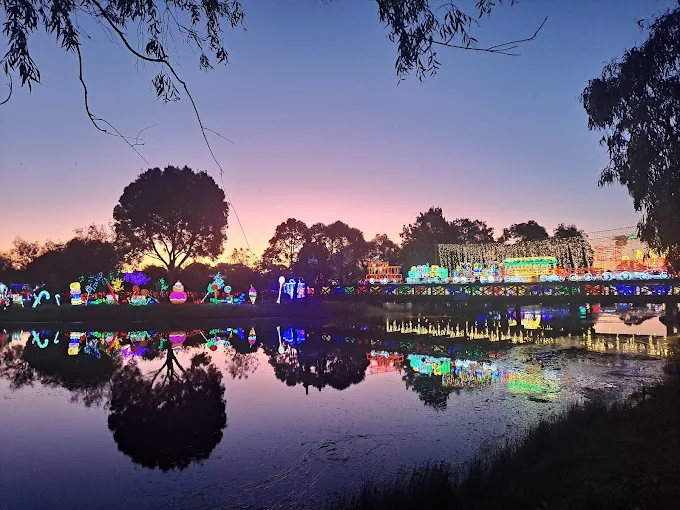Glacier National Park Camping
Discover the ultimate guide to Glacier National Park camping in this informative blog post. From breathtaking landscapes to thrilling outdoor adventures, explore the wonders of nature as we provide essential tips, must-visit spots, and useful insights for an unforgettable camping experience at one of America’s most cherished national parks.

Cold Temperatures: Extreme Winter
The arrival of winter brings with it the biting cold temperatures that can make even the hardiest souls bundle up. The extreme winter conditions pose various challenges for people living in regions where cold temperatures are the norm. From icy roads and frozen pipes to the constant struggle of keeping warm, the winter season demands special attention and preparation.
One of the key keywords to keep in mind during extreme winter is “layering.” Layering is the technique of wearing multiple layers of clothing to trap heat and provide insulation. This helps to combat the freezing temperatures outdoors and regulates body temperature even when transitioning between indoor and outdoor environments. Additionally, “frostbite” is another important keyword. Frostbite is a serious concern during extreme winter as prolonged exposure to cold temperatures can cause damage to exposed skin, particularly on the face and extremities. It is essential to protect oneself by wearing proper clothing, covering all exposed areas, and limiting exposure to the cold.
The Definitive Guide to the Top 20 Adventure Parks in the USA
Winter Challenges: Snowy Season
While winter can be a beautiful season, it also brings with it a host of challenges due to the snowy weather. The heavy snowfall can make transportation difficult and hazardous, causing delays and accidents on the roads. Snow accumulation can lead to blocked driveways and sidewalks, making it necessary for residents and businesses to put in extra effort to clear their paths. Furthermore, excessive snow can weigh down power lines and trees, increasing the risk of power outages and falling branches.
In addition to the physical challenges posed by snowy weather, the colder temperatures can also have a significant impact on daily life. Frostbite and hypothermia become real risks, and it is crucial for people to dress appropriately and limit their time spent outdoors in extreme cold conditions. Heating expenses can also skyrocket during this time as individuals rely on heating systems more frequently to combat the chill. Finally, the snow and ice can make outdoor activities more challenging and even dangerous, making it necessary for people to take extra precautions to ensure their safety.

Seasonal Closures: Late Fall Glacier National Park Camping
Late fall brings about a significant change in the outdoor landscape, with many recreational areas and facilities closing temporarily for the season. As the temperatures drop and the days grow shorter, parks, campgrounds, and hiking trails often enter a period of closure. This is primarily due to the decreased demand and the need to prepare for the upcoming winter conditions.
During this time, some recreational areas undergo maintenance and renovations to ensure they remain safe and functional for the next season. Facilities such as visitor centers and restrooms may be closed to the public, while certain areas are fenced off or marked as off-limits. It is important for visitors to be aware of these seasonal closures and plan their activities accordingly. While it may be disappointing to find your favorite trail or campground closed during late fall, it is crucial to respect these closures to maintain the long-term sustainability of these outdoor spaces.
Wildlife and Safety Concerns: Fall Glacier National Park Camping
Fall in the wilderness brings about unique wildlife and safety concerns. As summer transitions into autumn, animals such as bears and deer become more active in preparation for the winter months. This increased activity can lead to a higher risk of encounters between humans and wildlife. It is important for visitors to be aware of their surroundings and to take precautions to minimize the chances of a dangerous encounter. Hiking in groups, making noise to alert animals of your presence, and properly storing food to avoid attracting wildlife are all practices that can help to ensure a safe experience in the wilderness during the fall season.
Follow here
In addition to the potential risks posed by wildlife, fall weather conditions can also present safety challenges. The changing seasons bring about unpredictable weather patterns, with sudden drops in temperature and an increased likelihood of rain and storms. It is crucial for visitors to check weather forecasts and come prepared with appropriate clothing and gear. Wet rocks and slippery trails can make hiking more hazardous, so it is important to tread carefully and use caution. Being prepared for various weather conditions and staying aware of potential hazards can help to mitigate safety concerns during the fall season in the wilderness.

Melting Snow: Early Spring
As the winter months start to transition into early spring, one of the main concerns for many regions is the melting snow. The gradual increase in temperatures causes the snow piles to shrink and eventually disappear, revealing the ground beneath. However, this melting process can often create challenges and issues for both locals and visitors alike.
One significant consideration during the melting snow period is the potential for flooding. As the snow melts, the water needs to go somewhere, and it can quickly overwhelm drainage systems and cause flooding in low-lying areas. It is not uncommon to see streets and sidewalks covered in water during this time, making it necessary for individuals to plan their routes accordingly and be prepared for any detours they may encounter. Additionally, homeowners near rivers or other bodies of water need to be conscious of rising water levels and take necessary precautions to safeguard their property.
Unpredictable Weather: Spring
The spring season in this region is known for its unpredictable weather. As the winter frost begins to melt and give way to warmer temperatures, the weather patterns become highly variable. One moment the sun may be shining brightly, and the next, dark clouds roll in and unleash a sudden downpour. This ever-changing landscape can make planning outdoor activities a bit challenging, as one never knows if a sunny morning will turn into a stormy afternoon. It is advisable to be prepared for all types of weather conditions, carrying both sunscreen and an umbrella at all times.
The fickle nature of spring weather can also impact the blossoming of flowers and the awakening of wildlife. The fluctuating temperatures and occasional storms can have a significant impact on the delicate balance of nature. While some plant species may bloom earlier than expected, others may experience delays in their growth due to sudden cold snaps. Similarly, migratory birds and other wildlife may alter their patterns, seeking shelter or changing their feeding grounds in response to the changing weather. It is fascinating to witness the adaptability of nature during this time, as it showcases the resilience of life in the face of unpredictability.

Peak Tourist Season: Summer Months
With the arrival of summer, the breathtaking beauty of this destination reaches its peak. The warm weather and longer daylight hours make it an ideal time for tourists to explore and indulge in various outdoor activities. The region’s pristine lakes and rivers become popular spots for swimming, boating, and fishing, while the surrounding mountains offer thrilling hiking and camping opportunities. Whether visitors seek adventure or simply wish to relax and soak in the stunning scenery, the summer months never disappoint.
As the peak tourist season, summer brings a surge of visitors from all corners of the globe. The region buzzes with excitement as tourists flock to popular attractions and establishments. Hotels, restaurants, and recreational facilities are often fully booked, and it is advisable to make reservations well in advance. Additionally, some of the local roads can get congested during this time, so it’s important to plan travel carefully to avoid delays. Despite the increased crowds, summer remains a wonderful time to experience the charm and splendor of this destination.
When is the peak tourist season?
The peak tourist season is during the summer months.
What are the challenges of visiting during the winter?
The extreme winter temperatures can pose challenges for tourists.
What challenges can be expected during the snowy season?
The snowy season can present difficulties due to the heavy snowfall.
Are there any seasonal closures?
Yes, there are seasonal closures that occur in late fall.
Are there any concerns regarding wildlife and safety?
Fall brings concerns regarding wildlife encounters and safety.
What can be expected during the early spring?
The melting snow is a characteristic of the early spring season.
Is the weather predictable during the spring?
No, the weather during spring can be unpredictable.
When is the best time to visit based on the peak tourist season?
The best time to visit would be during the summer months, which is the peak tourist season.








One Comment